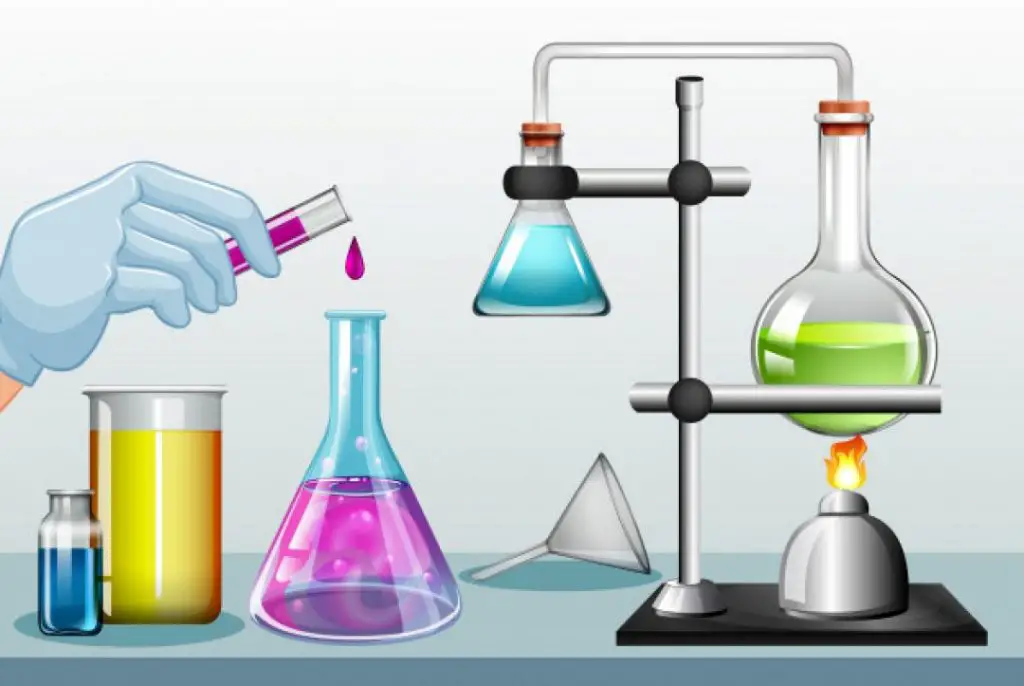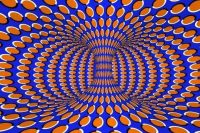Chemistry is one of the most mesmerizing sciences. The mixing of particular chemicals in a particular ratio can cause rather unexpected reactions that make fun demonstrations for students. Some chemical reactions are simply spectacular to watch and can be easily performed in chemistry laboratories with particular precautions. Cooking in the kitchen resembles chemical reactions in the laboratory. Here are the ten more exotic and amazing reactions that most of the school students may have not seen or experienced. [Note: Please do not try these experiments at home, and please perform these experiments in the laboratory under the supervision of your lab technician or teacher.]
1. Chemical Clock Reaction

Chemical clock reactions (oscillating reactions) are among the most interesting chemical reactions. In this reaction, a mixture of chemicals goes through a sequence of color changes, and this sequence repeats periodically. When the freshly prepared solution A, solution B, and solution C are mixed a colorless solution forms initially, which slowly turns into amber color, suddenly changes to a very dark blue, and this color slowly fades to colorless and the process repeats, about ten times in the most popular formulation. These oscillating reactions are engaging examples of “chemical magic”.
Solution A: The potassium iodate and sulfuric acid in distilled water.
Solution B: The malonic acid and manganese sulfate monohydrate in distilled water.
Solution C: 30% hydrogen peroxide in distilled water.
2. Carbon Snake

A carbon snake is the reaction of sugar with concentrated sulfuric acid. The concentrated sulfuric acid with granulated table sugar performs a degradation reaction, which changes its form to a black solid-liquid mixture. It is one of the most spectacular and simple chemical reactions performed in the laboratory. The sulfuric acid removes water from the sugar by releasing heat, steam, and sulfur oxide fumes. Aside from the sulfurous odor, the reaction smells a lot like caramel. The white sugar turns into a column shape black carbonized tube that pushes itself out of the beaker.
3. Elephant’s Toothpaste
A foamy substance of Elephant’s toothpaste is formed by the reaction of hydrogen peroxide and potassium iodide or yeast and warm water as a catalyst. The reaction proceeds rapidly which will depend on the amount of hydrogen peroxide. Because it requires only a small number of ingredients and makes a “volcano of foam”, which is a known experiment in the chemistry laboratory for school students. This experiment is also known as the “marshmallow experiment”.

4. Barking Dog reaction
The reaction of carbon disulfide and nitrous oxide results in Barking Dog Reaction. When carbon disulfide and nitrous oxide are ignited in a cylindrical tube, the reaction produces a bright light and a loud “noise” – resemblance of a barking dog.

5. Blue Bottle Experiment

The reaction of glucose, sodium hydroxide, and methylene blue results in a color-changing blue bottle experiment. A solution of glucose, sodium hydroxide and methylene blue in water in a closed bottle containing some air, upon standing, it spontaneously turns from blue to colorless. When we shake the bottle, the solution turns rapidly to blue color again. These cycles of color-change happen many times with further shaking. This blue bottle experiment is a classic chemistry demonstration in laboratory courses as a general chemistry experiment for students.
6. Chemical Garden

The addition of metal salts such as copper sulfate or cobalt chloride to a solution of sodium silicate in water results in the formation of hollow tubes that are growing like plants and look like a chemical garden. The growth of hollow tubes results in the growth of plant-like forms in minutes to hours.
7. Chemical Volcano

In this experiment, a small conical heap of orange ammonium dichromate is ignited and starts to decompose by releasing heat. This reaction resembles a volcanic eruption, producing sparks, a large volume of green ash, steam, and gas. Thus, the ammonium dichromate glows and emits sparks as it decomposes and produces copious amounts of green chromium (III) oxide ash. This reaction is simple to prepare and perform.
8. Golden Rain

The mixing of two colorless solutions of potassium iodide and lead nitrate at room temperature forms a yellow precipitate. In this chemical reaction, the particles in shining golden yellow color gently drop from the top of Erlenmeyer flask to the bottom, similar to watching the rain through a window. This golden yellow precipitate disappears with heating and leaving a colorless solution, and when this solution is cooled to room temperature, the golden-yellow color crystals begin to form. This process repeats with heating and cooling.
9. Screaming Jelly Babies

This reaction is also known as “Growling gummy bears”. In this reaction, Potassium chlorate reacts rapidly with the sugar in the candy and produces a whooshing, screaming, whistling sound, clouds of smoke, and a bright white flame tinged with violet from the potassium and a pleasant aroma of caramel. Other carbohydrate or hydrocarbon containing substances can also be dropped into test tubes of molten chlorate, with similar results.
10. Thermite Reaction

A thermite reaction is iron oxide (rust) reacting with aluminum to produce molten iron. The products are aluminum oxide, elemental iron, and a large amount of heat. The reactants are commonly or thermite mixture is aluminum powder and iron oxide (rust) powder. When the mixture is heated, it starts reacting, as the aluminum is more reactive than the iron and aluminum forms stronger and stable bonds with oxygen than iron.






